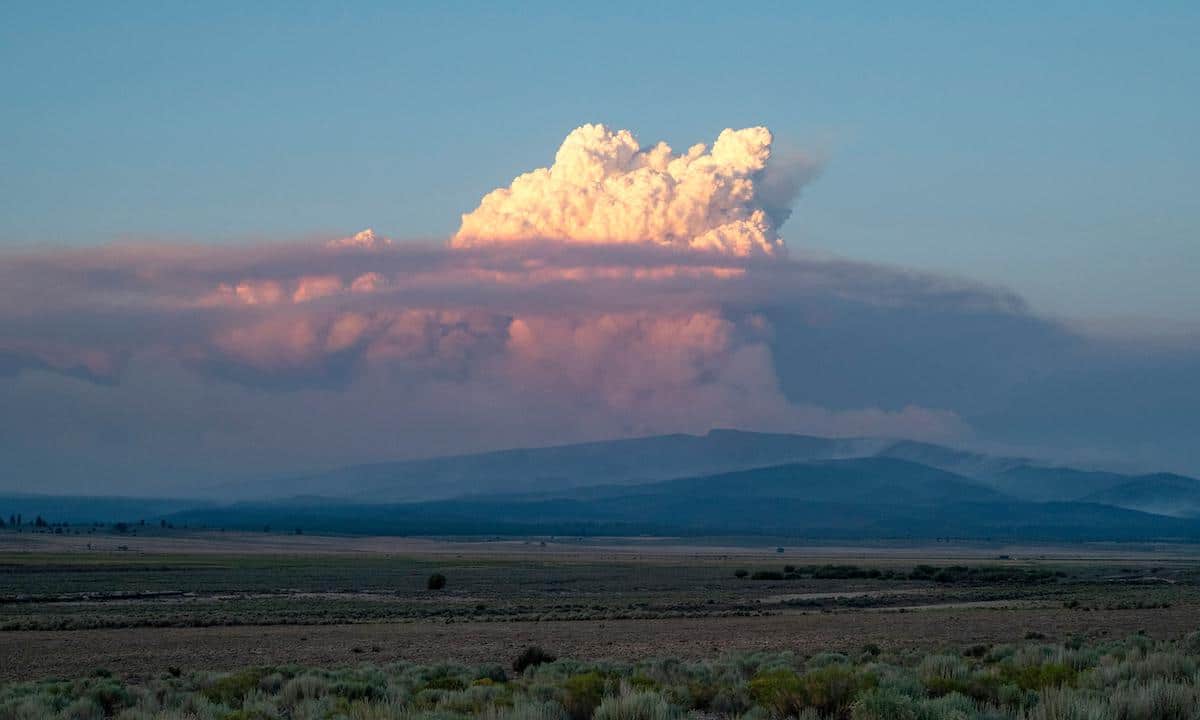

As the Bootleg fire in Southern Oregon rages on, the massive wildfire is creating its own weather systems.
“The fire is so large and generating so much energy and extreme heat that it’s changing the weather. Normally the weather predicts what the fire will do. In this case, the fire is predicting what the weather will do,” Marcus Kauffman, a spokesman for the state forestry department, told The New York Times.
The massive inferno has created a pyrocumulous cloud, also known as a “fire cloud,” that extends from the top of the blaze to 30,000 feet into the atmosphere. The cloud is currently producing lightning, and has the capacity to create dangerous thunderstorms that will make the fire harder to contain on the ground, the Salem Reporter noted. When that built-up mass comes back down towards Earth, it will force surface air outward, “creating strong winds in all directions that can spread the fire,” said The New York Times.
“A pyrocumulus cloud is similar to a normal cumulus cloud, but it is formed through large amounts of smoke from nearby wildfires. As a wildfire quickly heats the air near the ground, the thick, smoky air rapidly surges into the sky. This becomes a vicious cycle. As the wildfire burns, it creates a thunderstorm, which eventually leads to windy conditions at the surface, which allows the wildfire to grow even larger over time,” meteorologist Joe Curtis told AccuWeather.
It’s the same phenomenon documented in January 2020 during the Australian bushfires that burned for nearly 80 days. Ultimately, the clouds created fire tornadoes — vortexes of heat, ash, smoke and high wind — that killed one firefighter, according to CNBC. A video taken in 2018 shows a fire tornado ripping through California’s Carr Fire.
The Bootleg fire started on July 6, and is the largest of more than 80 major fires searing across 13 states. Heat waves and drought caused by climate change, as well as high winds are aiding the spread of the fires and making it more difficult to tamp out, said the BBC.
On Thursday night, the northern edge of the Bootleg fire jumped a barrier treated with a chemical retardant meant to contain its edges, forcing firefighters to back off. It was the latest example of the massive blaze barreling through a firebreak, The New York Times reported.
“We’ve had a lot of fuel that was ready to burn,” John Bailey, a professor of forestry at Oregon State University, told The New York Times, noting that a widespread bout of rain would help the situation, but doesn’t appear likely.

 233k
233k  41k
41k  Subscribe
Subscribe 